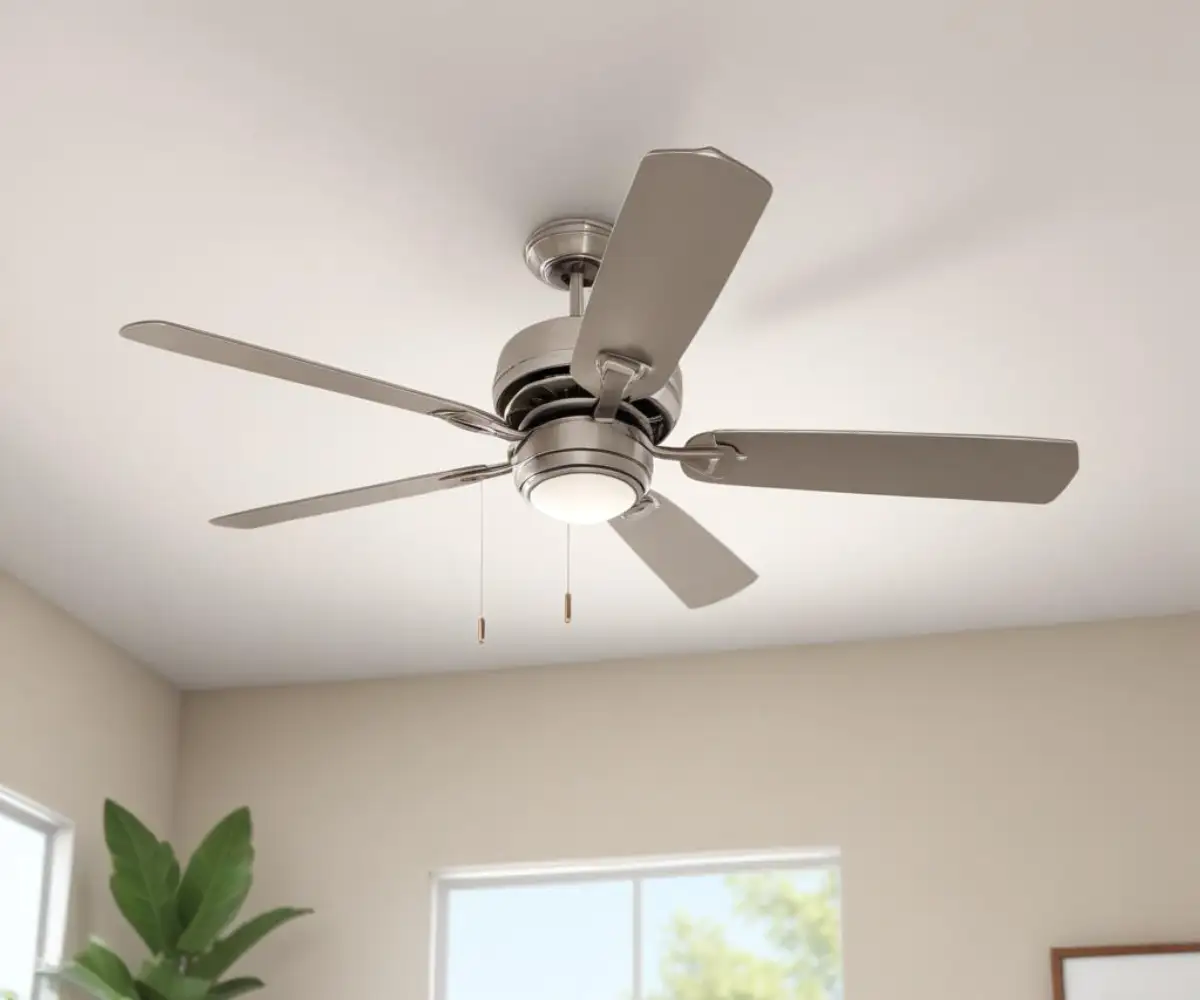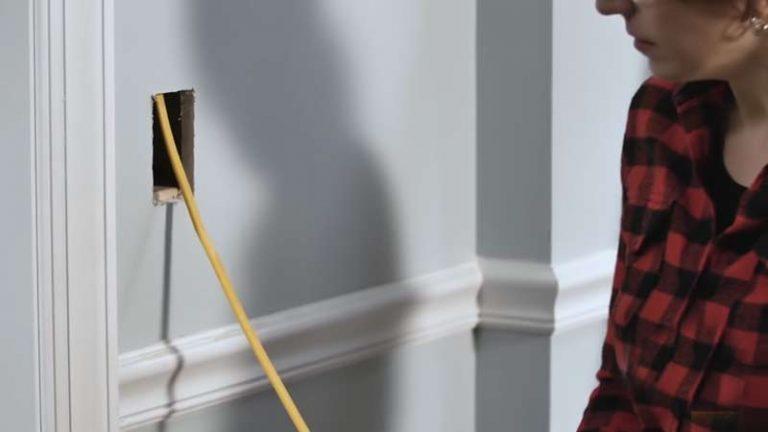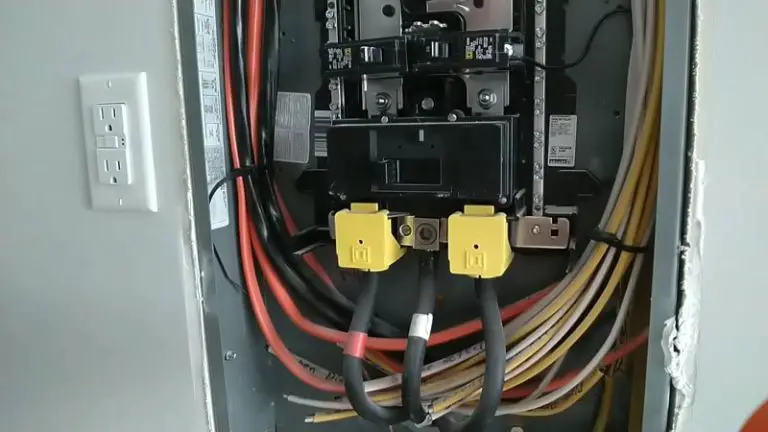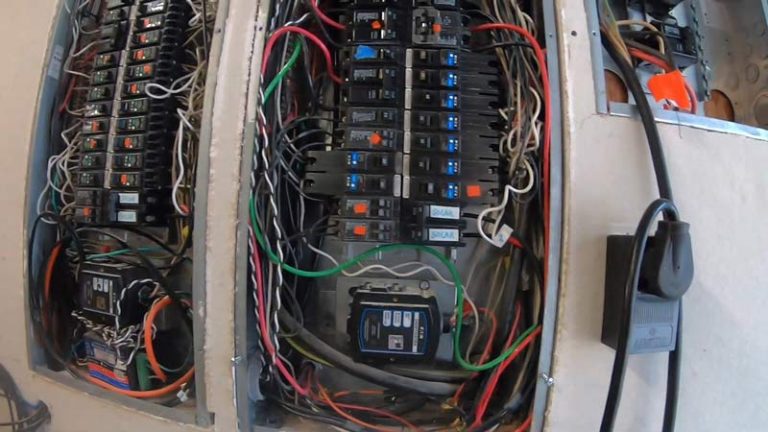Hunter Fan Smells Like Burning Plastic? Stop! Here’s the Fix
The gentle whir of a ceiling fan should bring a sense of calm and comfort. But when that sound is replaced by the alarming scent of burning plastic, it’s a major cause for concern. A burning smell from any electrical appliance, especially a Hunter ceiling fan, is a red flag you cannot ignore.
This odor is more than just unpleasant; it’s a clear warning sign of an underlying issue that could pose a serious fire risk. Ignoring it is not an option. This guide will walk you through the common causes and provide a clear, step-by-step action plan to safely diagnose and resolve the problem.
You'll Learn About
Why Your Hunter Fan Smells Like Burning Plastic: Top Causes
Several issues can cause your fan’s motor or electrical components to overheat and emit a dangerous burning smell. Understanding these potential culprits is the first step toward a safe resolution.
1. Overheating Motor: The Most Common Culprit
The fan’s motor is its powerhouse, and it can overheat for several reasons. A thick layer of dust and grime is often the primary offender. This buildup acts like an insulator, trapping heat and preventing the motor from cooling down properly.
Additionally, older fans may have bearings that require lubrication. Without it, friction increases, forcing the motor to work harder and generate excessive heat, which can melt the protective coating on the motor windings.
2. Faulty Wiring or Electrical Shorts
Electrical issues are a serious and immediate fire hazard. Loose connections in the wiring, whether in the fan’s housing or the ceiling junction box, can create electrical arcs. This arcing generates intense heat, easily melting plastic wire nuts and insulation.
Improper installation or damage to the wire’s insulation can also lead to a short circuit, another common source of a burning plastic smell. These electrical faults are why immediate action is so critical.
3. A Failing Capacitor
The capacitor in your ceiling fan is a small but vital component that helps the motor start and regulate its speed. When a capacitor begins to fail, it can overheat significantly. This often produces a distinct electrical burning smell and may be accompanied by a humming noise from the fan.
A failing capacitor can cause the fan to run slowly, struggle to start, or fail to change speeds. If you notice these performance issues along with the smell, the capacitor is a likely suspect.
4. The “New Fan” Smell: Is It Normal?
In some rare cases, a brand-new Hunter fan may emit a slight odor for the first 24 hours of operation. This is typically due to protective coatings on the motor burning off and is not usually harmful. However, this “new fan” smell is generally mild and metallic or oily, not a sharp, acrid burning plastic scent.
If the smell is strong, alarming, and smells distinctly like burning plastic, do not assume it’s normal. Always err on the side of caution and treat it as a potential hazard.
5. Incorrect Light Bulb Wattage
If your ceiling fan has a light fixture, using bulbs with a wattage that exceeds the fixture’s maximum rating can cause a burning smell. The excess heat can melt the light sockets or the insulation on the wires connected to them.
Always check the manufacturer’s recommendation printed on the light fixture for the maximum allowable bulb wattage. This is a simple check that can prevent a serious fire hazard.
Immediate Safety Steps: What to Do RIGHT NOW
If you detect a burning smell from your Hunter ceiling fan, your immediate priority is safety. Do not hesitate; act immediately to prevent a potential fire.
First, turn off the ceiling fan at the wall switch. Then, go to your home’s main electrical panel and shut off the circuit breaker that supplies power to the fan. This crucial step eliminates the risk of electrical shock and stops the component from overheating further.
Step-by-Step Troubleshooting Guide: Pinpointing the Problem
Once you have safely disconnected the power, you can begin to investigate the source of the smell. This requires a careful and methodical approach. You will need a sturdy ladder and a flashlight.
Step 1: A Thorough Visual Inspection (Power Off!)
With the power completely off, carefully remove the fan’s canopy (the part that covers the ceiling junction box) and the motor housing. Use your flashlight to inspect all the wiring for signs of melting, blackening, or scorching.
Pay close attention to the wire nuts connecting the fan’s wires to your home’s wiring. Look for any visible damage to the motor, capacitor (usually a small black box), or light fixture sockets.

Step 2: Checking the Light Kit and Bulbs
If the visual inspection of the motor and wiring reveals no obvious issues, turn your attention to the light fixture. Confirm that the wattage of the installed bulbs does not exceed the maximum rating for the fixture.
Remove the bulbs and inspect the sockets themselves for any dark discoloration or signs of melting plastic. A faulty light kit can be the source of the smell, even if the fan motor itself is fine.
Step 3: Listening for Clues
Before the smell started, did you notice any unusual noises? A humming or buzzing sound often points to a failing capacitor or a motor that is struggling to run. Sometimes, a high pitched noise from ceiling areas can be an early indicator of electrical strain.
These auditory clues, combined with the burning smell, can help you narrow down the list of potential culprits before you even begin disassembly.
DIY Fixes vs. Calling a Professional: A Decision Guide
Some issues can be handled by a confident DIYer, while others demand the expertise of a licensed electrician. When dealing with electrical wiring, safety must be your top priority. Improper repairs can lead to fire or electrocution.
This table can help you decide whether to tackle the job yourself or make the smart choice to call a professional.
| Task | DIY Potential | When to Call an Electrician |
|---|---|---|
| Cleaning Dust from Motor | High | If cleaning doesn’t resolve the smell. |
| Checking Light Bulb Wattage | High | N/A – This is a simple check. |
| Replacing a Faulty Capacitor | Medium | If you are not comfortable working with electrical components and wiring diagrams. |
| Tightening Loose Wires | Low | Always. Incorrectly secured wires are a major fire hazard. |
| Replacing Damaged Wiring | None | Immediately. This is a job exclusively for a licensed professional. |
| Replacing the Fan Motor | Low | If the motor is clearly burnt out or damaged, a full fan replacement by a professional is often safer and more cost-effective. |
How to Fix the Burning Plastic Smell: Your Action Plan
After identifying the likely cause, you can proceed with the appropriate solution. Remember, for any task involving wiring, the power must be off at the circuit breaker.
Solution 1: Deep Cleaning the Motor and Vents
If excessive dust is the problem, a thorough cleaning is required. Use a vacuum with a brush attachment to remove all dust and debris from the motor housing and vents. A can of compressed air can help dislodge stubborn dust from hard-to-reach areas.
Ensuring proper airflow is critical for preventing the motor from overheating in the future. Regular cleaning should become part of your home maintenance routine.
Solution 2: Replacing a Faulty Capacitor
If you’ve identified a bulging or leaking capacitor, it must be replaced. This is a task for those comfortable with basic electrical work. Carefully note the specifications on the old capacitor (microfarad (µF) rating and voltage).
You must purchase a replacement with the exact same specifications. Disconnect the wires to the old capacitor one at a time, connecting each to the corresponding terminal on the new one to avoid mistakes.
Solution 3: Choosing the Right Light Bulbs
This is the simplest fix. If your bulbs are too high in wattage, replace them immediately with bulbs that meet the fixture’s specifications. LED bulbs are an excellent choice as they produce significantly less heat and use less energy.
This not only solves the overheating issue but also makes your fan more energy-efficient.
Preventative Maintenance: Keeping Your Hunter Fan Safe and Smell-Free
The best way to deal with a burning smell is to prevent it from ever happening. Regular maintenance can extend the life of your fan and ensure its safe operation.
At least twice a year, clean the fan blades and motor housing to prevent dust buildup. While cleaning, check that all screws on the blades and mounting bracket are tight, as wobbling can put extra strain on the motor.
When the Smell Isn’t the Fan: Exploring Other Household Odors
Sometimes, a smell you think is coming from your fan might be originating elsewhere and circulated by the fan’s airflow. Strange odors can be elusive. For instance, a musty odor could be related to hidden moisture issues, similar to how a problem like drywall smells like urine can indicate a hidden leak.
Similarly, decomposing materials elsewhere in the home can create odors that are hard to pinpoint. Issues like crumbling particle board under countertops can release chemical smells when moisture is present. Always consider other potential sources if a thorough fan inspection reveals no problems.
Conclusion: Enjoying a Safe and Quiet Home
A Hunter ceiling fan that smells like burning plastic is a clear and urgent warning sign that demands immediate attention. By systematically turning off the power, inspecting the components, and addressing the root cause, you can mitigate the risk and restore safety to your home.
Never underestimate the danger of an electrical burning smell. Prioritizing safety, whether through careful DIY maintenance or by calling a qualified electrician, ensures your ceiling fan remains a source of comfort, not a cause for concern.



